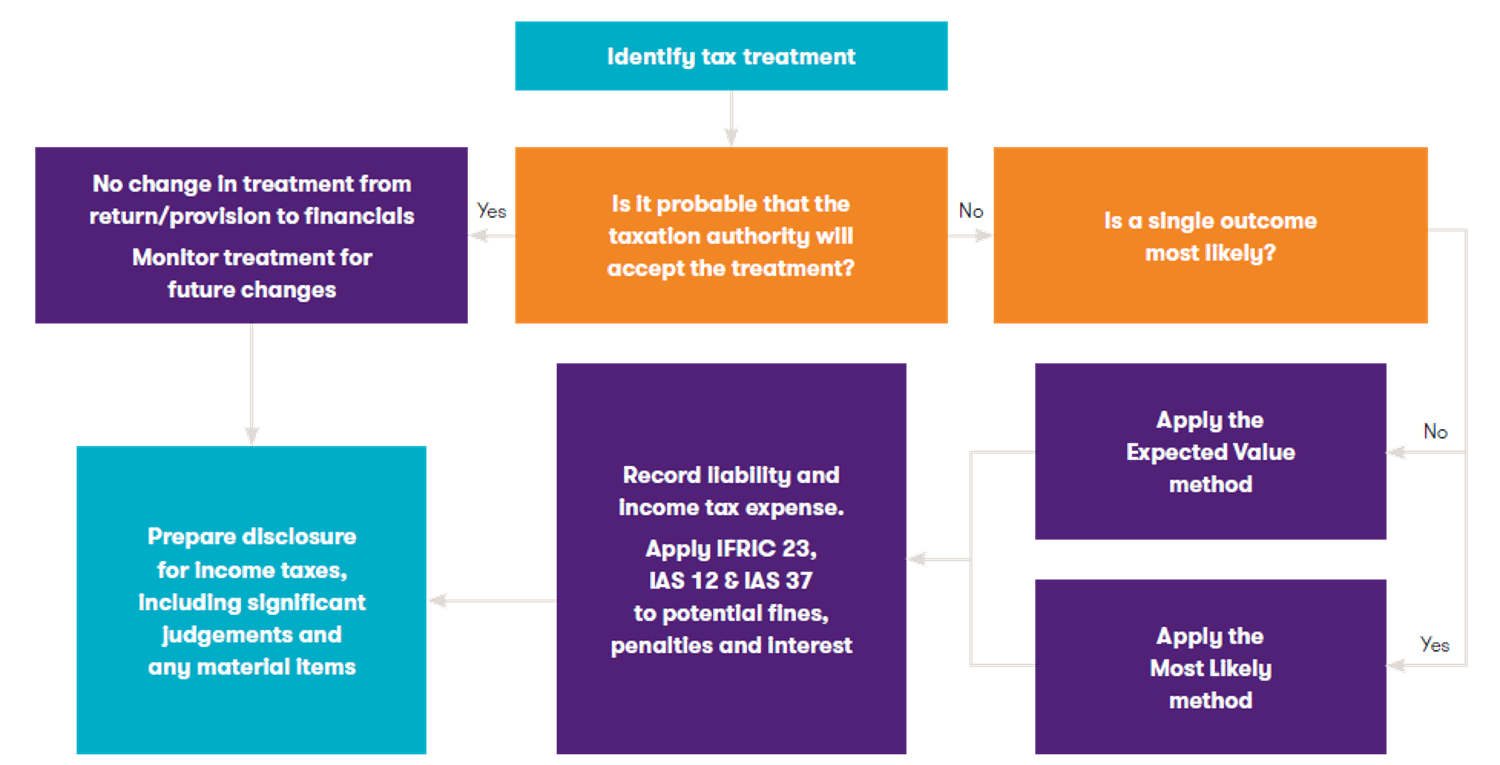-
Why Grant Thornton
Whether you’re growing in one market or many, looking to operate more effectively, managing risk and regulation, or realising stakeholder value, our firms can help.
-
Culture and experience
Grant Thornton’s culture is one of our most valuable assets and has steered us in the right direction for more than 100 years.
-
Global scale and capability
Beyond global scale, we embrace what makes each market unique, local understanding on a global scale.
-
Join our network
In a world that wants more options for high quality services, we differentiate in the market to grow sustainably in today’s rapidly changing environment.
-
Leadership governance and quality
Grant Thornton International Ltd acts as the coordinating entity for member firms in the network with a focus on areas such as strategy, risk, quality monitoring and brand.
-
Africa
24 member firms supporting your business.
-
Americas
31 member firms, covering 44 markets and over 20,000 people.
-
Asia-Pacific
19 member firms with nearly 25,000 people to support you.
-
Europe
53 member firms supporting your business.
-
Middle East
8 member firms supporting your business.
-
Business consulting services
Our business consulting services can help you improve your operational performance and productivity, adding value throughout your growth life cycle.
-
Business process solutions
We can help you identify, understand and manage potential risks to safeguard your business and comply with regulatory requirements.
-
Business risk services
The relationship between a company and its auditor has changed. Organisations must understand and manage risk and seek an appropriate balance between risk and opportunities.
-
Cybersecurity
As organisations become increasingly dependent on digital technology, the opportunities for cyber criminals continue to grow.
-
Forensic services
At Grant Thornton, we have a wealth of knowledge in forensic services and can support you with issues such as dispute resolution, fraud and insurance claims.
-
Mergers and acquisitions
We work with entrepreneurial businesses in the mid-market to help them assess the true commercial potential of their planned acquisition and understand how the purchase might serve their longer-term strategic goals.
-
Recovery and reorganisation
Workable solutions to maximise your value and deliver sustainable recovery.
-
Transactional advisory services
We can support you throughout the transaction process – helping achieve the best possible outcome at the point of the transaction and in the longer term.
-
Valuations
We provide a wide range of services to recovery and reorganisation professionals, companies and their stakeholders.
-
Sustainability advisory
We can assist you with a variety of sustainability advice depending on your needs, ranging from initial strategy development, reporting and compliance support, through to carbon measurement and management.

-
IFRS
At Grant Thornton, our IFRS advisers can help you navigate the complexity of financial reporting from IFRS 1 to IFRS 17 and IAS 1 to IAS 41.
-
Audit quality monitoring
Having a robust process of quality control is one of the most effective ways to guarantee we deliver high-quality services to our clients.
-
Global audit technology
Our global assurance technology platform provides the ability to conduct client acceptance, consultations and all assurance and other attestation engagements.
-
Sustainability assurance
Our sustainability assurance services are based on our global network of specialists, helping you make more efficient decisions for the good of your organisation.

-
Corporate and business tax
Our trusted teams can prepare corporate tax files and ruling requests, support you with deferrals, accounting procedures and legitimate tax benefits.
-
Direct international tax
Our teams have in-depth knowledge of the relationship between domestic and international tax laws.
-
Global mobility services
Through our global organisation of member firms, we support both companies and individuals, providing insightful solutions to minimise the tax burden for both parties.
-
Indirect international tax
Using our finely tuned local knowledge, teams from our global organisation of member firms help you understand and comply with often complex and time-consuming regulations.
-
Transfer pricing
The laws surrounding transfer pricing are becoming ever more complex, as tax affairs of multinational companies are facing scrutiny from media, regulators and the public
-
Africa tax desk
A differentiating solution adapted to the context of your investments in Africa.
-
Sustainability tax
Through our sustainability tax advisory services, we can advise how environmental taxes, incentives, and obligations can impact your progress, requiring alignment with governmental and legislative pressures.

-
 Banking Holding banking to account: the real diversity and inclusion pictureWe explore how the banking sector can continue to attract, retain and nurture women to build a more diverse and inclusive future.
Banking Holding banking to account: the real diversity and inclusion pictureWe explore how the banking sector can continue to attract, retain and nurture women to build a more diverse and inclusive future. -
 Sustainability From voluntary to mandatory ESG: How banks can future-proof their operationsAs we move from voluntary ESG initiatives to mandatory legislation, we explore what the banking sector needs to prioritise.
Sustainability From voluntary to mandatory ESG: How banks can future-proof their operationsAs we move from voluntary ESG initiatives to mandatory legislation, we explore what the banking sector needs to prioritise. -
 IFRS IFRS 9 - Audit of Expected Credit LossesGPPC releases The Auditor’s response to the risks of material misstatement posed by estimates of expected credit losses under IFRS 9
IFRS IFRS 9 - Audit of Expected Credit LossesGPPC releases The Auditor’s response to the risks of material misstatement posed by estimates of expected credit losses under IFRS 9 -
 growthiQ Steering your company to long-term successHistory has something important to tell us about the difficulties of steering a business to long-term success – through seismic shifts in technology, consumer demands and product development. With that in mind it’s unsurprising that over half the world’s largest companies in the early 1900s had shut their doors by the late 1990s. Some, however, have endured.
growthiQ Steering your company to long-term successHistory has something important to tell us about the difficulties of steering a business to long-term success – through seismic shifts in technology, consumer demands and product development. With that in mind it’s unsurprising that over half the world’s largest companies in the early 1900s had shut their doors by the late 1990s. Some, however, have endured.
-
 International Financial Reporting Standards Implementation of IFRS 17 ‘Insurance Contracts’The auditor’s response to the risks of material misstatement arising from estimates made in applying IFRS 17 ‘Insurance Contracts’
International Financial Reporting Standards Implementation of IFRS 17 ‘Insurance Contracts’The auditor’s response to the risks of material misstatement arising from estimates made in applying IFRS 17 ‘Insurance Contracts’ -
 IFRS Get ready for IFRS 17After twenty years of development the IASB has published IFRS 17 ‘Insurance Contracts’, find out more.
IFRS Get ready for IFRS 17After twenty years of development the IASB has published IFRS 17 ‘Insurance Contracts’, find out more.
-
 Global business pulse - industry analysis Mid-market recovery spreads to more industriesThe index results for 13 key industries of the mid-market reveals a very uneven recovery from COVID-19
Global business pulse - industry analysis Mid-market recovery spreads to more industriesThe index results for 13 key industries of the mid-market reveals a very uneven recovery from COVID-19 -
 Global business pulse - industry analysis A very uneven recovery across industriesThe index results for 13 key industries of the mid-market reveals a very uneven recovery from COVID-19
Global business pulse - industry analysis A very uneven recovery across industriesThe index results for 13 key industries of the mid-market reveals a very uneven recovery from COVID-19 -
 Global business pulse - Sector analysis Clear patterns of damage from COVID-19 across the industriesThe index results for 12 key sectors of the mid-market reveal just how much or little the various parts of the economy were impacted by COVID-19.
Global business pulse - Sector analysis Clear patterns of damage from COVID-19 across the industriesThe index results for 12 key sectors of the mid-market reveal just how much or little the various parts of the economy were impacted by COVID-19. -
 Not for profit Mission: possible – putting impact at the heart of charityGlobal charitable continues to decline and charity leaders are increasingly looking at their own unique impact journey.
Not for profit Mission: possible – putting impact at the heart of charityGlobal charitable continues to decline and charity leaders are increasingly looking at their own unique impact journey.
-
 Access to finance Raise finance to invest in changePrepare your business to raise finance to invest in change.
Access to finance Raise finance to invest in changePrepare your business to raise finance to invest in change. -
 Private equity firms Private equity in the mid-market: reshaping strategies for 2021When the global COVID-19 pandemic stormed across the globe in early 2020, the private equity sector was hit hard but deals are coming back to the market.
Private equity firms Private equity in the mid-market: reshaping strategies for 2021When the global COVID-19 pandemic stormed across the globe in early 2020, the private equity sector was hit hard but deals are coming back to the market. -
 Mid-market businesses Getting ready for private equity investmentOur specialists explore how private equity firms are now working with their portfolios and how the mid-market can benefit from investment.
Mid-market businesses Getting ready for private equity investmentOur specialists explore how private equity firms are now working with their portfolios and how the mid-market can benefit from investment. -
 Mid-market businesses Myth-busting private equityNervous about partnering with Private Equity? We explore some of the common myths we come across when speaking to mid-market businesses about PE investment.
Mid-market businesses Myth-busting private equityNervous about partnering with Private Equity? We explore some of the common myths we come across when speaking to mid-market businesses about PE investment.
-
 Public sector Helping build the government of tomorrow, todayLearn about the Grant Thornton US public sector team.
Public sector Helping build the government of tomorrow, todayLearn about the Grant Thornton US public sector team. -
 Global business pulse - industry analysis Mid-market recovery spreads to more industriesThe index results for 13 key industries of the mid-market reveals a very uneven recovery from COVID-19
Global business pulse - industry analysis Mid-market recovery spreads to more industriesThe index results for 13 key industries of the mid-market reveals a very uneven recovery from COVID-19 -
 Global business pulse - industry analysis A very uneven recovery across industriesThe index results for 13 key industries of the mid-market reveals a very uneven recovery from COVID-19
Global business pulse - industry analysis A very uneven recovery across industriesThe index results for 13 key industries of the mid-market reveals a very uneven recovery from COVID-19 -
 Global business pulse - Sector analysis Clear patterns of damage from COVID-19 across the industriesThe index results for 12 key sectors of the mid-market reveal just how much or little the various parts of the economy were impacted by COVID-19.
Global business pulse - Sector analysis Clear patterns of damage from COVID-19 across the industriesThe index results for 12 key sectors of the mid-market reveal just how much or little the various parts of the economy were impacted by COVID-19.
-
 Industries European Real Estate PodcastJessica Patel, Tax Partner at Grant Thornton UK speaks with tax partners and directors across the network to share their insights on the real estate market and some of the challenges.
Industries European Real Estate PodcastJessica Patel, Tax Partner at Grant Thornton UK speaks with tax partners and directors across the network to share their insights on the real estate market and some of the challenges. -
 Industries European Real Estate PodcastJessica Patel, Tax Partner at Grant Thornton UK speaks with tax partners and directors across the network to share their insights on the real estate market and some of the challenges.
Industries European Real Estate PodcastJessica Patel, Tax Partner at Grant Thornton UK speaks with tax partners and directors across the network to share their insights on the real estate market and some of the challenges. -
 Global business pulse - industry analysis Mid-market recovery spreads to more industriesThe index results for 13 key industries of the mid-market reveals a very uneven recovery from COVID-19
Global business pulse - industry analysis Mid-market recovery spreads to more industriesThe index results for 13 key industries of the mid-market reveals a very uneven recovery from COVID-19 -
 Global business pulse - industry analysis A very uneven recovery across industriesThe index results for 13 key industries of the mid-market reveals a very uneven recovery from COVID-19
Global business pulse - industry analysis A very uneven recovery across industriesThe index results for 13 key industries of the mid-market reveals a very uneven recovery from COVID-19
-

-
 Global business pulse - industry analysis Mid-market recovery spreads to more industriesThe index results for 13 key industries of the mid-market reveals a very uneven recovery from COVID-19
Global business pulse - industry analysis Mid-market recovery spreads to more industriesThe index results for 13 key industries of the mid-market reveals a very uneven recovery from COVID-19 -
 Global business pulse - industry analysis A very uneven recovery across industriesThe index results for 13 key industries of the mid-market reveals a very uneven recovery from COVID-19
Global business pulse - industry analysis A very uneven recovery across industriesThe index results for 13 key industries of the mid-market reveals a very uneven recovery from COVID-19 -
 Retail How retail is positioning for successCOVID-19 provided some hard lessons for the retail industry. It is time to turn those into sustainable and well executed growth strategies in 2021.
Retail How retail is positioning for successCOVID-19 provided some hard lessons for the retail industry. It is time to turn those into sustainable and well executed growth strategies in 2021.
-
 Technology Mid-market tech companies lead the way on diversity and inclusionWe explore how the mid-market tech sector can continue to build and nurture a culture that’s increasingly more diverse and inclusive for women.
Technology Mid-market tech companies lead the way on diversity and inclusionWe explore how the mid-market tech sector can continue to build and nurture a culture that’s increasingly more diverse and inclusive for women. -
 Tax Resetting global tax rules after the pandemicBusinesses are seeing rising challenges, and finance heads are dealing with a range of new measures. To say the next 12 months are critical for businesses is an understatement.
Tax Resetting global tax rules after the pandemicBusinesses are seeing rising challenges, and finance heads are dealing with a range of new measures. To say the next 12 months are critical for businesses is an understatement. -
 TECHNOLOGY International tax reform: the potential impact on the technology industryIn this article, we’ve summarised key elements of the global tax reform proposals, their potential impact on technology industry and advice from our digital tax specialists on what technology companies can do to prepare.
TECHNOLOGY International tax reform: the potential impact on the technology industryIn this article, we’ve summarised key elements of the global tax reform proposals, their potential impact on technology industry and advice from our digital tax specialists on what technology companies can do to prepare. -
 TMT TMT industry: Fully charged or on standby?Our research revealed five key trends that resonated with Technology, Media and Telecoms (TMT) industry leaders around the world. We asked a panel of our experts from UK, US, India Ireland and Germany, to give us their reaction to the findings.
TMT TMT industry: Fully charged or on standby?Our research revealed five key trends that resonated with Technology, Media and Telecoms (TMT) industry leaders around the world. We asked a panel of our experts from UK, US, India Ireland and Germany, to give us their reaction to the findings.
-
 TMT TMT industry: Fully charged or on standby?Our research revealed five key trends that resonated with Technology, Media and Telecoms (TMT) industry leaders around the world. We asked a panel of our experts from UK, US, India Ireland and Germany, to give us their reaction to the findings.
TMT TMT industry: Fully charged or on standby?Our research revealed five key trends that resonated with Technology, Media and Telecoms (TMT) industry leaders around the world. We asked a panel of our experts from UK, US, India Ireland and Germany, to give us their reaction to the findings. -
 Cybersecurity One size fits nothingTechnology companies must adopt a new approach to digital risk: those that successfully develop a reputation for digital trust by demonstrating an unwavering commitment to cyber security and data privacy will be able to carve out a competitive advantage.
Cybersecurity One size fits nothingTechnology companies must adopt a new approach to digital risk: those that successfully develop a reputation for digital trust by demonstrating an unwavering commitment to cyber security and data privacy will be able to carve out a competitive advantage. -
 Technology, media & telecommunications Why it’s time for a 5G reality checkFigures suggest the mobile sector is maturing. While data usage continues to soar, mobile revenues are expected to flatten out over the next few years.
Technology, media & telecommunications Why it’s time for a 5G reality checkFigures suggest the mobile sector is maturing. While data usage continues to soar, mobile revenues are expected to flatten out over the next few years. -
 GrowthiQ Is blockchain right for your business?Blockchain has been seized upon by the financial services sector, where it is playing a crucial role in tracking and authenticating transactions.
GrowthiQ Is blockchain right for your business?Blockchain has been seized upon by the financial services sector, where it is playing a crucial role in tracking and authenticating transactions.
-
 International business Mid-market businesses lifted by rising tide of optimismOptimism among global mid-market business leaders rose to 67% in the first half of this year and they are markedly more optimistic about their prospects with global optimism having increased by 8%.
International business Mid-market businesses lifted by rising tide of optimismOptimism among global mid-market business leaders rose to 67% in the first half of this year and they are markedly more optimistic about their prospects with global optimism having increased by 8%. -
 Global business pulse - industry analysis Mid-market recovery spreads to more industriesThe index results for 13 key industries of the mid-market reveals a very uneven recovery from COVID-19
Global business pulse - industry analysis Mid-market recovery spreads to more industriesThe index results for 13 key industries of the mid-market reveals a very uneven recovery from COVID-19 -
 Hotels COVID-19: Checking in with the hotel industry one year onCOVID-19 provided some hard lessons for the hotel sector. It is time to turn those into sustainable and well executed growth strategies.
Hotels COVID-19: Checking in with the hotel industry one year onCOVID-19 provided some hard lessons for the hotel sector. It is time to turn those into sustainable and well executed growth strategies. -
 Global business pulse - industry analysis A very uneven recovery across industriesThe index results for 13 key industries of the mid-market reveals a very uneven recovery from COVID-19
Global business pulse - industry analysis A very uneven recovery across industriesThe index results for 13 key industries of the mid-market reveals a very uneven recovery from COVID-19
- By topic
-
Women in Business 2025
For 21 years, the Women in Business report has tracked the proportion of women in senior roles in the mid-market. Progress has been made but with gender equity over 25 years away, that isn’t soon enough.
-
The journey to a sustainable future
The world needs a sustainable mid-market. It’s vital to economies, societies and the planet. Businesses, governments, and other stakeholders must work collaboratively to make sure this vital part of the world economy succeeds.
-
Navigating tariffs
Traditional global export markets continue to shift as tariffs are introduced, presenting a challenge for mid-market firms
-
International business: Mid-market growth and expansion
The mid-market looks to international business opportunities for growth.
-
Women in Business 2025: Impacting the missed generation
The 2025 Women in Business report explores the external pressures and internal drivers that impact gender diversity in senior roles in the mid-market.
-
Women in tech: A pathway to gender balance in top tech roles
Grant Thornton’s 2024 Women in Business data suggests we are far from achieving parity within the mid-market technology sector.
-
Women in leadership: a pathway to better performance
What makes the benefits of gender parity compelling is the impact it can have on commercial performance.
-
Women in Business 2024
2024 marks the 20th year of Women in business where we monitor and measure the proportion of women occupying senior management roles around the world.
-
Women in business: Regional picture
We saw an increase in the percentage of senior management roles held by women, on a global level, but there are some significant regional and country variations.
-
Pathways to Parity: Leading the way
To push towards parity of senior management roles held by women, who leads within an organisation is vital.
-
Generating real change with a long-term focus
The most successful strategy to achieve parity of women in senior management is one which stands alone, independent of an ESG strategy.
-
People at the heart of great business
Businesses have started to put guidelines and incentives in place, focused on driving employees back to the office.
-
The journey to a sustainable future
The world needs a sustainable mid-market. It’s vital to economies, societies and the planet. Businesses, governments, and other stakeholders must work collaboratively to make sure this vital part of the world economy succeeds.
-
Ten considerations for preparing TCFD climate-related financial disclosures
Insights for organisations preparing to implement the International Sustainability Standards Board (ISSB)’s Standards.
-
COP28
COP28 was the first time there has been a global stocktake on progress against the Paris Agreement.
-
Transition Plan Taskforce publishes its final disclosure framework
As organisations in the private sector make commitments and plans to reach net zero, there's a growing need for stakeholders to be able to assess the credibility of their transition plans.
-
Promoting ESG excellence through tax
ESG considerations have never been more important for an organisation’s long-term success, but how can tax be used to add value to an ESG agenda?
-
International business: Mid-market growth and expansion
The mid-market looks to international business opportunities for growth.
-
Top five constraints to international business in the mid-market
Top five major constraints that are testing the mid-market’s ability to grow their businesses internationally.
-
Brand and international marketing – breaking global barriers
Brand has been identified as a key driver of mid-market success when looking to grow and develop international business.
-
The key to international business: Investing in people
How can recruitment and retention help grow international business?
-
Building resilience in international business
Evolving supply chains and trade patterns amid ongoing global uncertainty.
-
Example Financial Statements
The 2025 Interim Financial Statements provide general guidance on preparing interim financial statements in accordance with IFRS Accounting Standards.
-
IFRS 8
Our ‘Insights into IFRS 8’ series considers some key implementation issues and includes interpretational guidance in certain problematic areas.
-
IFRS 16
Are you ready for IFRS 16? This series of insights will help you prepare.
-
IAS 36
Insights into IAS 36 provides assistance for preparers of financial statements and help where confusion has been seen in practice.
-
IFRS 17
Explaining the key features of the Standard and providing insights into its application and impact.
-
Pillar 2
Key updates and support for the global implementation of Pillar 2.
-
Global expatriate tax guide
Growing businesses that send their greatest assets – their people – overseas to work can face certain tax burdens, our global guide highlights the common tax rates and issues.
-
International indirect tax guide
Navigating the global VAT, GST and sales tax landscape.
-
Global transfer pricing guide
Helping you easily find everything you need to know about the rules and regulations regarding transfer pricing and Country by Country reporting for every country you do business with.
Effective for financial years beginning on or after 1 January 2019, IFRIC 23 ‘Uncertainty Over Income Tax Treatments’ (‘the Interpretation’) requires entities to consider the potential for adverse tax determinations being made by taxing authorities while under a hypothetical tax review – and record a liability (and expense) where such a finding is considered “probable”. Many entities may not experience a financial impact as a result of this, but the Interpretation remains applicable and certain disclosures may be appropriate.
Download our Insights into IFRIC 23
Preparers are expected to apply the tax rules in good faith. This Interpretation expands on this principle and requires an entity to record a liability where it is considered probable that an uncertain tax treatment that affects the determination of taxable income, tax bases, unused tax losses, unused tax credits and tax rates, would not be resolved in favour of the entity if it were to be reviewed by a taxation authority.
For each individual tax treatment identified, the process is relatively simple, but first, it is important to understand its scope.
- What income taxes does IFRIC 23 apply to?
- What is a tax treatment?
- What is meant by uncertainty?
- What is a taxation authority?
Definitions
What taxes does IFRIC 23 apply to?
IFRIC 23 applies to any tax that is an ‘income tax’ as defined by paragraph 2 of IAS 12 ‘Income Taxes’, which states:
‘…income taxes include all domestic and foreign taxes which are based on taxable profits. Income taxes also include taxes, such as withholding taxes, which are payable by a subsidiary, associate or joint arrangement on distributions to the reporting entity.’
Many jurisdictions around the world include multiple taxes that may or may not meet the IAS 12 definition despite having a name which implies otherwise. This includes the following (this list is non-exhaustive):

What is meant by a taxation authority?
A taxation authority is a body that has authority to review or determine whether the tax relates to income tax of the entity or one of its components. For example, this may include the French Tax Authority, the Australian Tax Office, the United States Internal Revenue Service, HM Revenue & Customs in the United Kingdom, or the courts of a jurisdiction.
Initial tax assessment
Once a tax treatment has been identified and deemed to be uncertain, a judgement must be made as to whether it is not probable that a taxation authority will uphold the entity’s tax treatment. This may require consultation with tax advisors.
The assessment should be made on the basis that it is expected that the taxation authority will examine the transaction and will have full knowledge of all the information needed to assess the conformity of the tax treatment. It is therefore not possible for the entity to take into account the probability of examination when determining whether the taxation authority will accept the treatment retained even though there is a time limit on the right of the taxation authority to examine income tax filings.
If it is determined to be probable that the taxation authority will uphold management’s tax treatment, no additional liability is required. The transaction should be tracked for future reference and potential changes in facts and circumstances which will result in a change in the judgement made.
If it is not determined to be probable that a taxation authority will uphold the entity’s tax treatment, the entity must estimate the expected outcome of the inspection. Two methods are prescribed:
• The most likely value, and
• The expected value.

The most likely value
If the expected outcome is binary, or if there is concentration in a single potential outcome, the ‘most likely’ method may result in the most accurate measure of the outcome.
For example, an entity has claimed a deduction for a single transaction of value (after tax) of CU1,000 which, upon inspection, is considered probable to not be accepted by a taxation authority. The entity determines that the potential outcome is binary, and if the taxation authority determines that the tax treatment will not be upheld, the value of the exposure is CU1,000. As a result, a liability of CU250 is recorded (based on a tax of 25%).
The expected value
If the expected outcome is neither binary nor concentrated in a single potential outcome, the ‘expected value’ method may result in the most accurate measure of the outcome.
The expected value method calculates exposure by reference to the sum of the probability-weighted outcome of a range of potential outcomes. It is applied where the ‘Most Likely Value’ method is not able to be applied.
An entity has entered into a series of transactions with an overseas subsidiary. The overseas subsidiary provides accounting functions and does not generate revenue. It is managed as a break-even operation which is highly likely to be challenged by the relevant taxation authority given all its other overseas subsidiaries generate significant revenue. No transfer pricing study has been completed to estimate an appropriate margin for tax purposes. Total costs incurred by the entity (for tax purposes) are CU10,000.
Case A:
The entity has considered the potential facts and determined that instances seen in case law where the facts are similar have consistent outcomes:
- 0% margin, occurring 10% of the time; and
- 15% margin, occurring in 90% of cases.
Management determine that 15% margin is the most likely value, and this results in a liability of CU1,500 and a tax liability of CU 375, when the tax rate is 25%.
Case B:
The entity determines that a range of potential outcomes exist due to the potential for a taxation authority applying different margin rates. Given the facts of the jurisdiction, the entity has determined that the following outcomes are possible:
| Margin Rate | Probability | Weighted value * |
| 5% | 10% | 50 |
| 10% | 25% | 250 |
| 15% | 30% | 450 |
| 20% | 20% | 400 |
| 25% | 15% | 375 |
| Tax exposure | 1,525 | |
| Tax liability (@25%) | 381 | |
| * Calculated as (Tax Cost) * (Margin) * (Probability) | ||
The entity therefore recognises a tax liability of CU381.
Subsequent measurement
Changes in facts and circumstances may change an entity’s determination as to the acceptability of a tax treatment by a taxation authority. In such cases, the entity must consider the new facts and circumstances in relation to its judgements and this new information may increase or decrease the probability of acceptance of a tax treatment by a taxation authority.
Any change in facts and circumstances should be accounted for as a change in accounting estimate in accordance with IAS 8 ‘Accounting Policies, Changes in Accounting Estimates and Errors’.
Consideration of events that give rise to a change in facts and circumstances after the balance sheet date must be considered in the context of IAS 10 ‘Events after the Reporting Period’ to determine whether an event is an adjusting or non-adjusting event.
Over time, tax treatments will be identified, included in assessing the potential liability, and then removed as the right to examine or re-examine expires.
Example changes in facts and circumstances
- Completion of a review by a taxation authority
- Acceptance (or non-acceptance) of a similar tax treatment by the taxation authority for another entity
- Information regarding the amount paid to settle a similar tax treatment
- New case law
- New regulation
- Expiration of the right to examine or re-examine a tax treatment.
Disclosure
Disclosure requirements are those defined elsewhere in accounting standards, with certain paragraphs directly referenced by the Interpretation.
The disclosure requirements in the Interpretation are open to significant judgement and should be tailored to the needs of the users and management’s assessment of materiality as it considers the potential impacts. We would recommend preparers of financial statements consider disclosing:
- The policy for identifying uncertain tax treatments including judgements made in determining taxable profit, tax bases, unused tax losses, unused tax credits and tax rates
- The policy for measuring uncertain tax treatments including Information about the assumptions and estimates made in determining taxable profit, tax bases, unused tax losses, unused tax credits and tax rates in disclosing sources of estimation uncertainty
- Key limitations on exposure to uncertain tax treatments, such as the periods currently under potential inspection by taxation authorities, and
- Qualitative and quantitative disclosures related to individually material uncertain tax treatments including If acceptance of an uncertain tax treatment is probable, potentially disclose the potential effect as a tax-related contingency.
Other considerations
Transactions with tax and non-tax characteristics
In certain jurisdictions, certain types of transactions (such as refundable R&D credits) may or may not be accounted for by applying IAS 12 based on the facts and circumstances of the individual transaction. Where the underlying transaction is accounted for as an income tax item, it is subject to IFRIC 23; where it is not accounted for as an income tax item, IFRIC 23 does not apply.
Penalties and interest
Depending on facts and circumstance and the jurisdiction, penalties and interest are generally not included within the scope of IAS 12. As a result, they are not accounted for by applying IFRIC 23. We do note, however, that IAS 37 ‘Provisions, Contingent Liabilities and Contingent Assets’ does apply. We would consider it appropriate for an entity that records a liability when applying IFRIC 23 to consider the need for an additional penalties and interest provision by applying IAS 37.
The key point to consider is that applying IFRIC 23 instead of IAS 37 would require the entity to recognise the penalty earlier because an IFRIC 23 approach would not take into account the likelihood of detection (said differently it would take into account a 100% risk of detection) whereas such likelihood would be part of the probability assessment under IAS 37.
Exposure to benefits and liabilities
While this paper primarily discusses the risk of payments arising from review by a taxation authority, ie additional liabilities to which the entity is exposed, the Interpretation does not differentiate between benefits and liabilities.
It therefore may be appropriate to account for certain classes of transaction, for example, cross-border related party transactions (sometimes referred to as transfer pricing transactions) by recording a liability in one jurisdiction and, if appropriate and allowed by the second jurisdiction, record an asset for potential tax adjustments. We note that the entity must consider whether a right of offset exists before recording a net liability.
Further ramifications
Historically, the completion of a review by a taxation authority that resulted in an adjustment to income taxes has generally been accounted for as an event within the year of the completion of the review. However, this could vary by jurisdiction and so discussion with tax advisors on this point is highly recommended.
IFRIC 23, by requiring that an entity estimate the outcome of such a review, will result in additional consideration for restatement as required by IAS 8 to be made by entities in such a situation.
Generally speaking, where all facts and circumstances were considered at the prior reporting date and it was determined that the outcome of the review was unlikely to be unfavourable to the entity, a change in estimate may reasonably be arguable.
Common sources of uncertain tax treatments
Common sources of an uncertain tax treatment include, but are not limited to:
- Usage of accounting depreciation rates for income tax calculations
- Inappropriate deferral of revenue recognised over time in accordance with IFRS 15 ‘Revenue from Contracts with Customers’
- Non-preparation of or reliance on out-of-date transfer pricing studies
- Accidental breach of withholding tax regulations, especially as it relates to transfers of funds from foreign jurisdictions
- Non-deeming of interest on related party loans
- Arithmetic error
- Untested assumptions, especially regarding the availability of income tax losses in future periods, and
- Usage of a principles-based approach to preparation of foreign-jurisdiction taxes.
Practical application
IFRIC 23 has put more emphasis on the need to develop a strong tax governance which would rely on the combination of relevant external assistance and appropriate internal policy and procedure in relation to taxes.
Policies and procedures comprise a significant component of efficient and effective governance and, due to the interaction with accounting standards and the overarching accounting control environment, will extend beyond the expertise of both tax and accounting specialists; effective policy and procedure development will require coordinated input from experts in both fields.
IFRIC 23 will probably require (to some extent) preparers to reorganise their documentation process and policy. We therefore recommend that the entity develop a documented process and policy for IFRIC 23 and include:
- A process for identifying all relevant taxation jurisdictions, including Federal, State and Local jurisdictions. We note that this may include:
- Countries
- States / Counties
- Local authorities
- An assessment for every jurisdiction of the potential materiality of exposure based on local tax rates and significance of transactions subject to taxation
- Where jurisdictional exposure may be material, individual uncertain tax treatments impacting that jurisdiction and conclusions as to the ramifications of each uncertain tax treatment.
We are here to help
We hope you find the information in this article helpful in giving you some insight into IFRIC 23. If you would like to discuss any of the points raised, please speak to your usual Grant Thornton contact or your local member firm.

